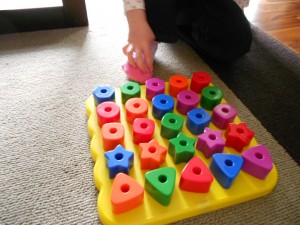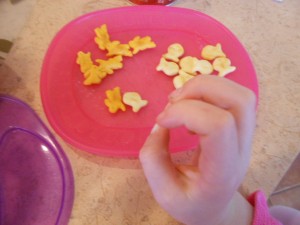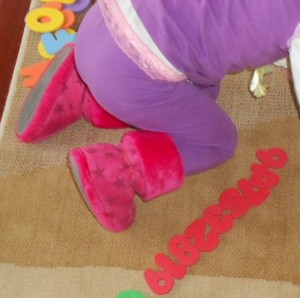Did you know at school 1 in 4 children is burdened with math anxiety? Children’s play builds math confidence instead of anxiety which can last for a lifetime.
When it comes to math, such as dividing a recipe in half, checking the utility bill, or measuring a board before cutting, are you comfortable? For many adults this is a nightmare and the roots of the fear come from long before they started school. Trying to figure out which way to go when suddenly faced with numbers is like trying to navigate in a new country. For kids that haven’t seen, touched, and played with numbers before school no wonder they feel fearful and anxious. On the other hand, kids that have math play experiences greet numbers and math ideas like old, familiar friends.
As parents and caregivers, they are countless ways to encourage math play. Here are a few:
- Run some water in a sink or bin and add a few containers and spoons of different sizes. As kids play they figure out it takes lots and lots of small containers to fill a bigger one. That’s the math concept of volume.
- Snack time has many opportunities for counting. Let kids count out 10 fishy crackers, cheerios, chocolate chips, raisins, cranberries, and other little finger foods to eat up. Young kids will need help with the counting. It won’t be accurate at first. Some of the numbers will be mixed up but kids are hearing and using the number words.

- Compare the sizes of things and use words like more, less, many, few, small, big, etc. Math is also about relationships. Dolls and
other toys that go inside each other are designed on relationship. - Include some foam and magnetic numbers for kids to touch and explore. Kids may not know which number shape goes with which number word but brains are recording how they look and feel.
- Patterning is another important math skill. You can show your child a few patterns, like red car/blue car, red car/blue car. After seeing lots of repeated patterns kids can make then on their own.
- One-to-one matching is a critical idea. A muffin tin is fun for this. One car or one block or one tiny animal goes in each hole. Brains need to grasp the idea that one number means one thing so play experiences are critical. Setting the table is one-to-one matching too. One fork for each person.

The expression to “steal a march on someone” means to have an advantage. Ordinary experiences will give your child a powerful advantage and play builds math confidence. How many ways can your child play with math today?
